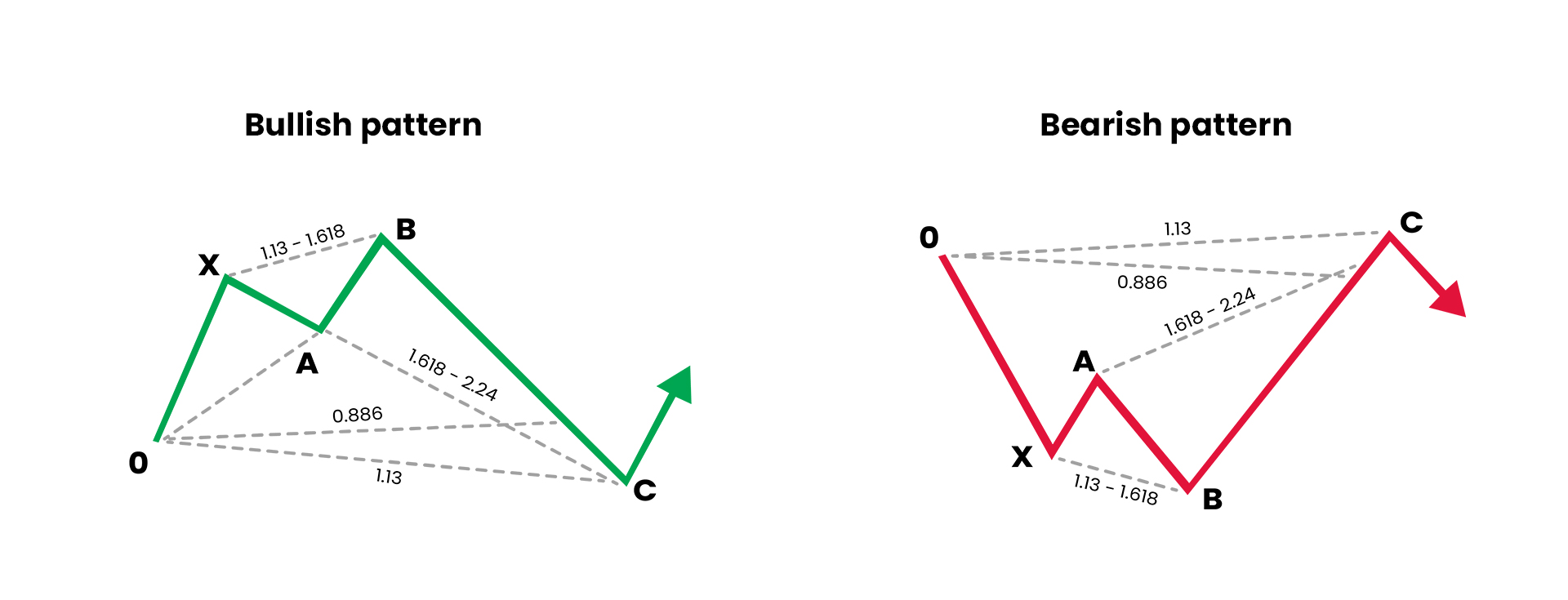In the vast ocean of the forex market, traders often seek patterns and indicators to navigate the turbulent waters and make informed trading decisions. One such pattern that has gained recognition among traders is the Shark Pattern. Similar to its aquatic namesake, the Shark Pattern lurks beneath the surface, waiting for the right moment to strike. In this comprehensive guide, we'll dive deep into the world of the Shark Pattern, exploring its origins, characteristics, and strategies for trading it effectively.
What is the Shark Pattern?
The Shark Pattern is a relatively new addition to the world of harmonic trading patterns, which includes well-known patterns like the Gartley, Butterfly, and Bat patterns. Developed by Scott Carney, a renowned harmonic trader, the Shark Pattern combines various Fibonacci levels and ratios to identify potential reversal points in the forex market.
The Shark Pattern is primarily a reversal pattern, indicating a potential change in the direction of price movement. It is considered a more advanced pattern and requires a keen eye for detail and patience to identify accurately.

Anatomy of the Shark Pattern
To understand the Shark Pattern fully, let's break down its components:
X-A Leg: This is the initial leg of the pattern and represents the start of a significant price move.
A-B Leg: This leg retraces a portion of the X-A leg, typically around 0.618 or 0.786 Fibonacci retracement level.
B-C Leg: The B-C leg is a crucial component, retracing a significant portion of the A-B leg, usually around 1.618 Fibonacci extension of the X-A leg.
C-D Leg: This final leg extends from point C and represents the potential reversal point. It often terminates at the 0.886 Fibonacci retracement level of the X-A leg.
Entry Point (PRZ): The Potential Reversal Zone (PRZ) is the area where the pattern suggests a potential reversal may occur. It is the confluence of Fibonacci levels and price action within the C-D leg.

Trading the Shark Pattern
Trading the Shark Pattern effectively requires a systematic approach and adherence to risk management principles. Here's a step-by-step guide to trading the Shark Pattern:
Identify the Shark Pattern: Use charting software or tools to identify potential Shark Patterns on your forex charts. Look for the specific characteristics mentioned above, including Fibonacci levels and ratios.
Confirming Indicators: To increase the probability of a successful trade, consider using additional technical indicators like RSI, MACD, or moving averages to confirm the reversal potential within the PRZ.

Entry Point: Enter your trade at or near the Potential Reversal Zone (PRZ). This is where the price action aligns with the Fibonacci levels within the C-D leg.
Stop Loss and Take Profit: Always set a stop-loss order to limit potential losses. The stop-loss should be placed just beyond the PRZ. Determine a take-profit level based on your risk-reward ratio and market conditions.
Risk Management: Ensure your position size aligns with your risk tolerance. Risk no more than 1-2% of your trading capital on a single trade.
Monitor and Adjust: Keep a close eye on your trade as it unfolds. If price action moves in your favor, consider trailing your stop-loss to lock in profits. If the trade goes against you, adhere to your stop-loss and exit the trade.
Advanced Techniques for Trading the Shark Pattern
Now that you have a foundational understanding of the Shark Pattern, let's explore some advanced techniques and tips for trading this harmonic pattern successfully.
Multiple Timeframe Analysis:
Incorporating multiple timeframe analysis can provide a more comprehensive view of the market. Start by identifying the Shark Pattern on a higher timeframe chart (e.g., daily or weekly) to gauge the broader trend. Then, switch to a lower timeframe (e.g., 1-hour or 4-hour) to pinpoint entry and exit opportunities with greater precision.
Combine with Other Technical Analysis Tools:
While the Shark Pattern itself is a potent indicator, combining it with other technical analysis tools can enhance your trading strategy. For instance, consider using support and resistance levels, trendlines, and candlestick patterns to validate your Shark Pattern signals.
Harmonic Pattern Confluence:
Look for confluence with other harmonic patterns. Sometimes, the completion of a Shark Pattern coincides with the completion of a different harmonic pattern, such as a Gartley or a Bat pattern. This confluence can strengthen your trade setup.
Fibonacci Cluster Zones:
Instead of relying solely on a single Fibonacci level within the C-D leg, consider using Fibonacci cluster zones. These are areas where multiple Fibonacci levels (e.g., 0.786, 1.618, 2.618) align closely, providing stronger support for a reversal.
Fundamental Analysis:
While the Shark Pattern primarily relies on technical analysis, don't disregard fundamental factors. Economic events, geopolitical developments, and central bank policies can significantly impact currency prices. Be aware of these factors and consider how they might influence your trade.
Practice Patience:
The Shark Pattern may not appear frequently on your charts. It's crucial to exercise patience and wait for high-probability setups. Trading every potential Shark Pattern can lead to overtrading and losses.
Backtesting and Journaling:
Before implementing the Shark Pattern in your live trading, backtest it extensively on historical data. Maintain a trading journal to record your trades, including entry and exit points, reasons for the trade, and outcomes. This will help you identify areas for improvement and refine your strategy over time.
Risk-Reward Ratio:
Always maintain a favorable risk-reward ratio. A common approach is to aim for a risk-reward ratio of at least 1:2 or 1:3. This means that your potential reward should be at least twice or thrice the amount you are risking on the trade.
Avoid Overleveraging:
The forex market offers high leverage, but it can also amplify losses. Use leverage cautiously and avoid overleveraging your trades, as it can quickly deplete your trading capital.
Continuous Learning:
Stay updated with the latest developments in the forex market, trading strategies, and technical analysis tools. Attend webinars, read books, and follow reputable forex news sources to expand your knowledge.
Final Thoughts
Trading the Shark Pattern in the forex market can be a rewarding endeavor when approached with a disciplined and well-informed strategy. By incorporating advanced techniques, conducting thorough analysis, and managing risk effectively, you can increase your chances of success when navigating the dynamic waters of currency trading. Remember that no trading strategy guarantees profits, and losses are an inherent part of trading. Thus, it's crucial to practice prudent risk management and remain committed to ongoing learning and improvement as a forex trader.










